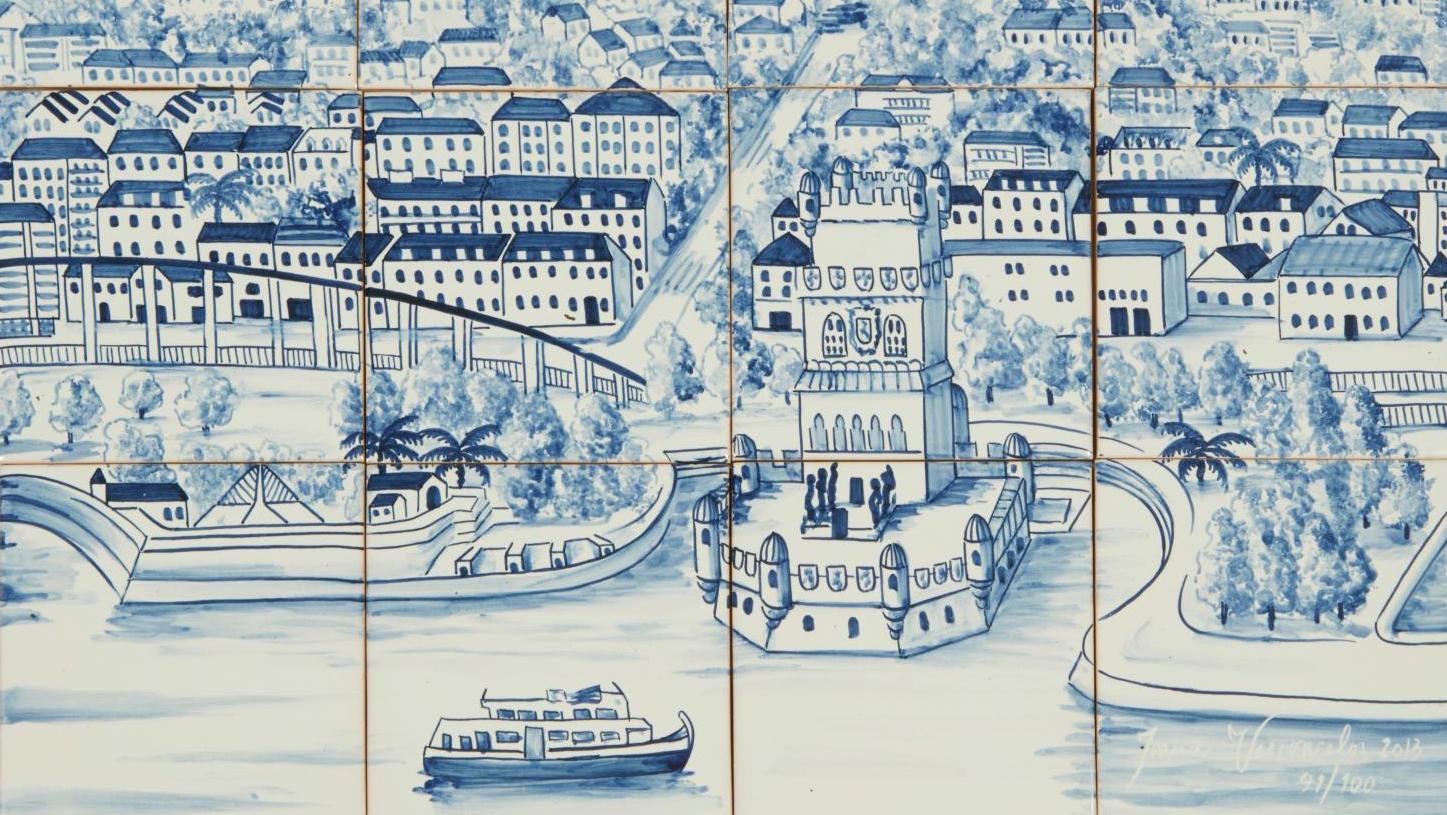by Marielle Brie

Joana Vasconcelos (born 1971), Trafaria Praia, large panorama of 21st-century Lisbon (Belém Tower), 2013. Hand-painted azulejos, signed, dated and numbered on tile 95/100. Fired by Dilecta, 42 x 56 cm/16.54 x 22.05 in (14 x 14 cm/5.51 x 5.51 each tile). Paris, Drouot, June 22, 2015. Millon Auction House. Result: €3,900
The Iberian peninsula’s earliest azulejos appeared in the architecture of al-Andalus: the alicatados (a mosaic formed of polygonal, colored glazed tiles) at the royal palace of Alcazar in Seville are none other than azulejos that were cut up and assembled into geometric forms. In Portugal, some rare examples of 15th-century Mudéjar art from Seville still grace the Palace of Sintra. King Manuel I (1469–1521) played a key role in this: following Seville’s example, he demanded azulejos for his palace, starting a tradition destined to thrive. Click here to read more




